Choosing the best drone for you is as important as choosing the right land-based camera. And with the DJI Mavic Air 2 and DJI Mavic 2 Pro, the drone giant has provided a real conundrum for anyone who's buying their first flying camera, or simply adding a new model to their fleet.
So how do you go about choosing a winner in the great DJI Mavic Air 2 vs Mavic 2 Pro debate? To start with, it's worth getting some nutshell summaries of each of these closely related drones.
The DJI Mavic 2 Pro was released back in mid-2018 and is the flagship model in DJI’s consumer line-up. While it’s not as advanced as the Inspire 2 or Matrice models, which are high-end professional drones used by the movie industry, the Mavic 2 Pro is much more compact and is more than capable of being used by working professionals. Features include a 1-inch sensor, variable aperture and the ability to shoot both Raw stills and video. The basic Mavic 2 Pro kit costs $1,599 / £1,349 / $2,499.

The DJI Mavic Air 2, meanwhile, was released in early 2020 and features updated technology compared to the Mavic 2 Pro, including slow-motion video up to 240fps, more precise obstacle avoidance sensors, a longer flight time and significantly better battery life in the controller to name a few.
While the Mavic Air 2 has a smaller 1/2-inch 12MP sensor than its sibling, its top speed and wind resistance are also practically identical to the larger Mavic 2 Pro, showing how far DJI’s technology has come in such a short space of time. The basic Mavic Air 2 kit is also significantly cheaper, costing $799 / £769 / AU$1,499.
That's a basic comparison of the two drones' relative strengths, but what about the crucial smaller differences? Here's our in-depth DJI Mavic Air 2 vs Mavic 2 Pro comparison, where we look at their relatives designs, controllers, specs, performance and image quality.
- These are the best drones you can buy right now
- Read our in-depth DJI Mavic Air 2 review
- Or check out our full DJI Mavic 2 Pro review
Design and controller
- Both drones have the same folding design and look almost identical
- The Mavic 2 Pro is larger, but remains a highly portable option
- The Mavic Air 2 has a new, larger controller
Moving away from the design of the original DJI Mavic Air, the Mavic Air 2 uses the same folding design as the Mavic 2 Pro and exhibits a greatly improved build quality over its predecessor.
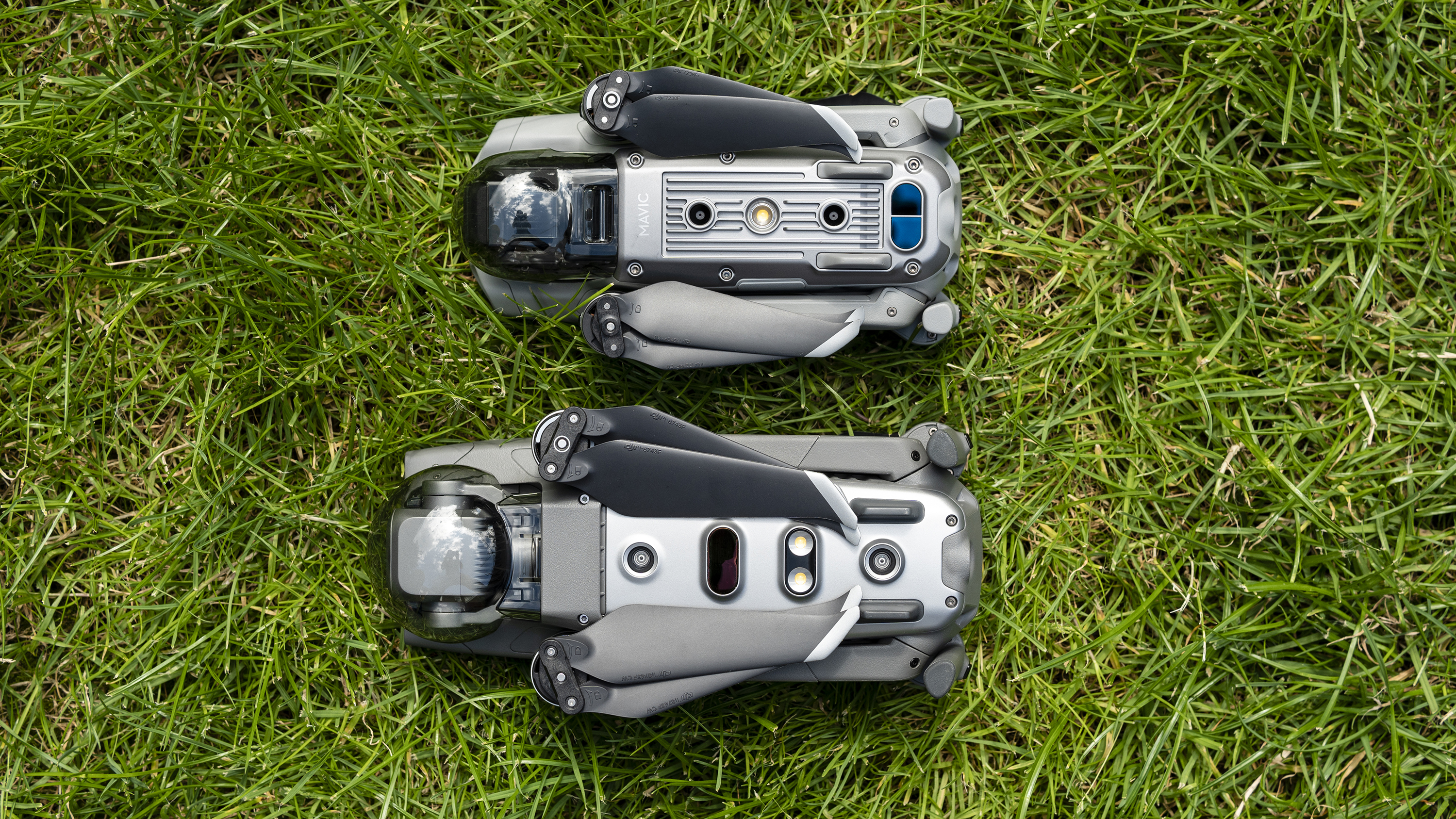
The two look near-identical, with the 570g Mavic Air 2 being a smaller version of the 907g Mavic 2 Pro. This may not sound a lot in weight terms, but for the outdoor photographer and videographer, this kind of weight saving can be significant.
Throw the battery weights of 198g for the Mavic Air 2 and 297g for the Mavic 2 Pro into the mix, and the weight savings continue to grow. The Mavic 2 Pro remains a highly portable option and shouldn’t necessarily be overlooked due to size and weight, but the Mavic Air 2 is the most compact and portable of the two.
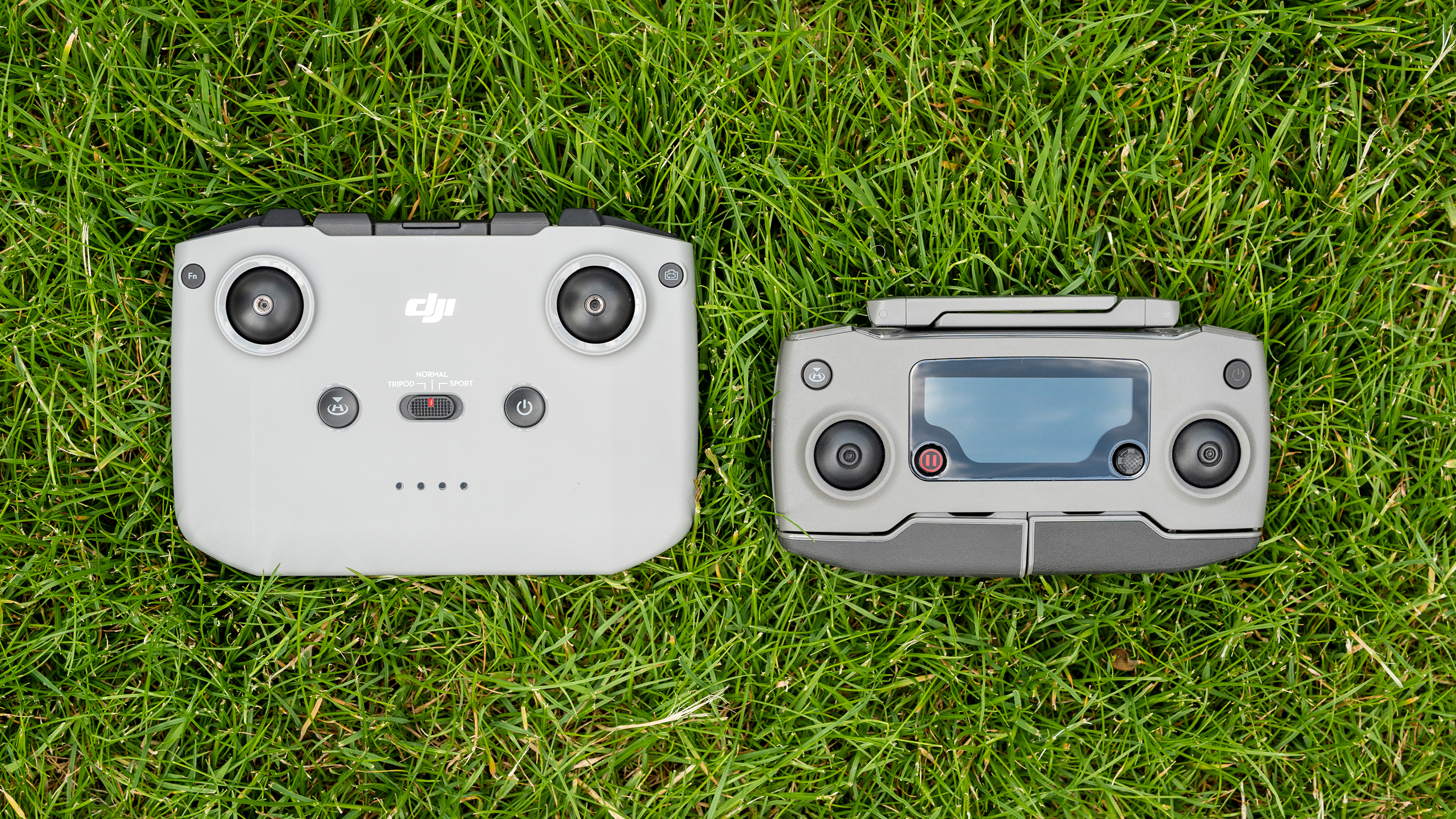
The controller for the Mavic Air 2 has moved away from the folding design of the Mavic Pro models and doesn’t feature an LCD screen for additional flight, drone and camera information. Its controller is larger as a result but also includes improved battery life that provides more flights per charge than the Mavic 2 Pro controller.
In terms of size and weight, though, it’s still surprising that DJI moved away from the folding controller design when the Mavic Air 2 itself is so compact.
Specs and features
- The Mavic Air 2 shoots slo-mo video up to 1080/240p and 4K/60p
- The Mavic 2 Pro shoots up to 1080/120p and 4K/30p
- Mavic Air 2 can also shoot hyperlapses up to 8K
Despite the Mavic 2 Pro providing better image quality than the Mavic Air 2, which we’ll look at later, the Mavic Air 2 provides double the frame rate for slow-motion video at 240fps at 1080p, compared to the Mavic 2 Pro at 120fps.
This also extends to 4K video where the Mavic Air 2 again doubles the frame rate with video capture possible up to 60fps, compared to the Mavic Pro at 30fps.
In terms of intelligent flight modes the two drones are again similar, and one doesn’t trump the other except for the Mavic Air 2 having improved follow/tracking modes and the ability to capture hyperlapses at up to 8K.
This may not be all that useful at the moment since few people have 8K TVs, but this certainly provides a degree of future-proofing since this technology will become increasingly prevalent in the home.
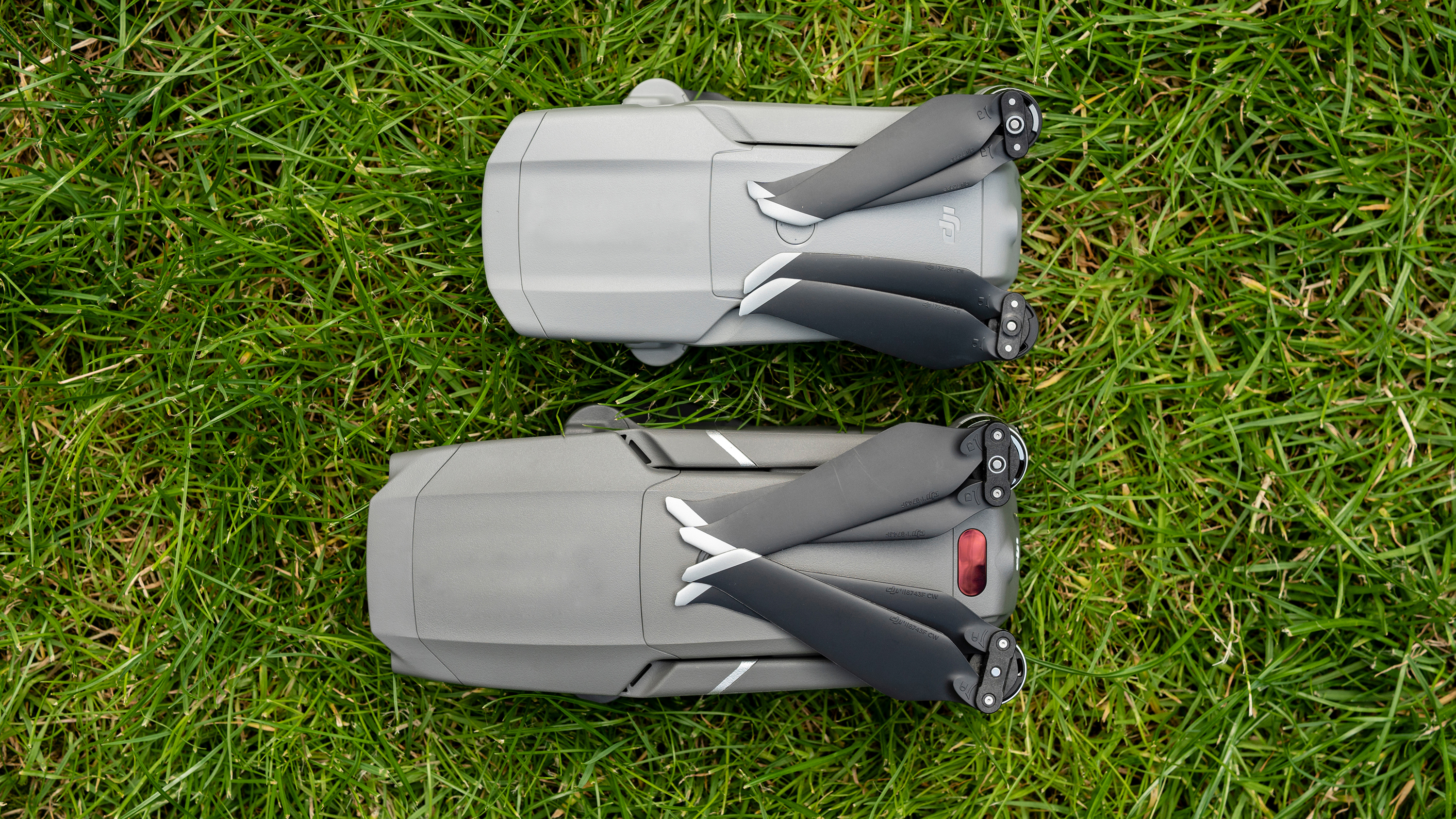
Of course, one of the biggest factors when deciding between these drones will be their cameras. The Mavic 2 Pro has a 1-inch 20MP sensor with a camera providing an equivalent focal length of 28mm. This compares with the smaller 1/2-inch 12MP sensor of the Mavic Air 2, which has a camera focal length equivalent to 24mm.
The difference between these sensors is most noticeable when shooting stills, but it also contributes to the physical size and weight difference between the drones. Deciding between them comes down to weighing up how important these factors are to you.
In terms of functionality, at a software level the cameras are similar, but the Mavic 2 Pro features an adjustable aperture and autofocus, whereas the Mavic 2 uses a fixed f/2.8 aperture and hyperfocal focusing.
Performance
- Both drones use GPS and GLONASS satellite systems
- The Mavic Air 2 offers a slightly longer battery life
- The Mavic 2 Pro features more obstacle avoidance sensors
On paper, both the Mavic 2 Pro and Mavic Air 2 fly at near identical speeds and offer near-identical wind resistance, yet the Mavic 2 Pro looks and feels much more stable in the air. This is most likely because while both drones use folding low-noise propellers, those on the Mavic 2 Pro are larger.
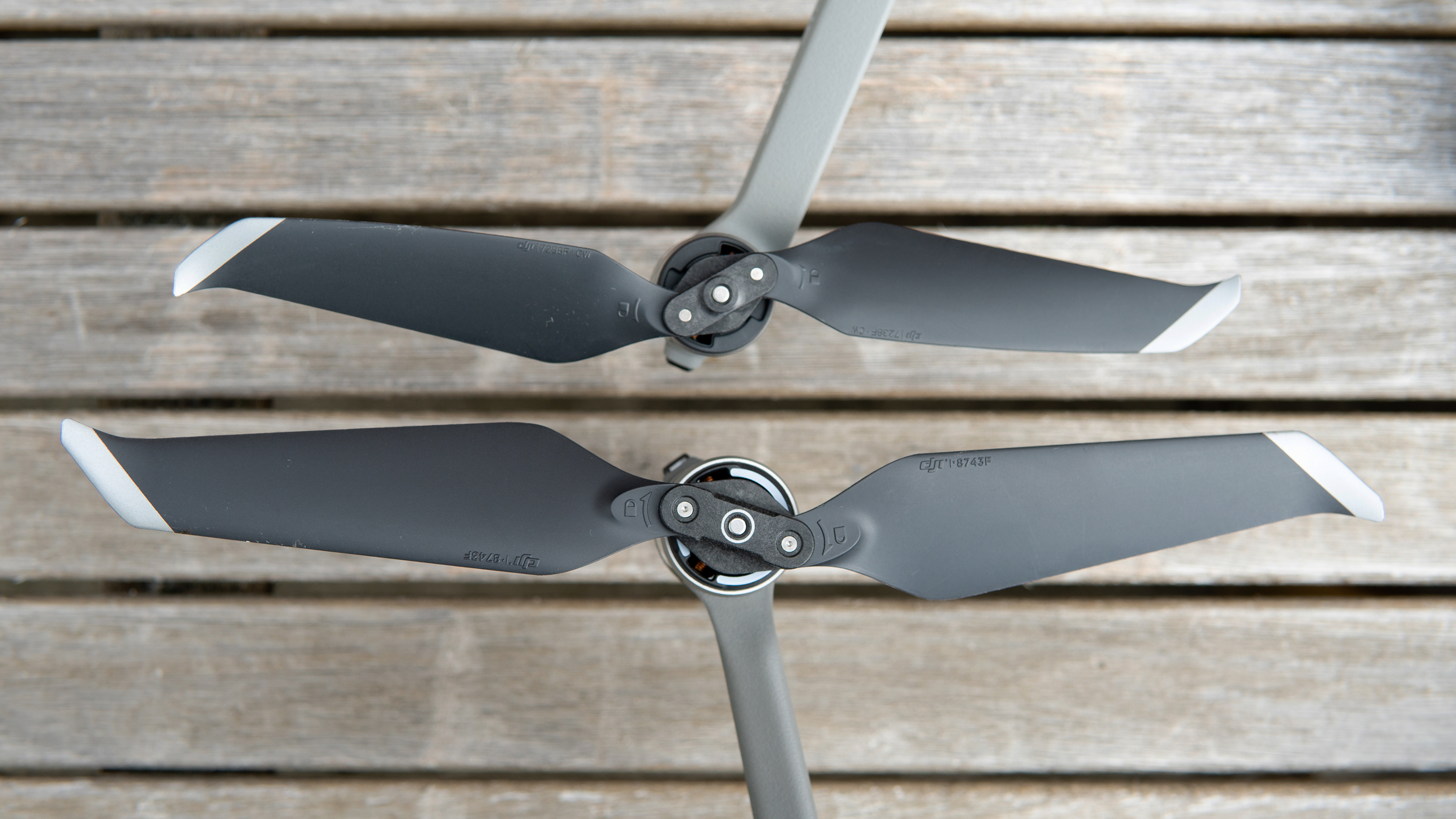
Both drones use GPS and GLONASS satellite systems and offer forward, backward and downward obstacle avoidance sensors, though the Mavic Air 2's are slightly more precise. The Mavic 2 Pro, though, fights back with side and upwards sensors.
In general flight, you don’t notice any difference until you fly in tougher conditions such as through trees, for example. Video transmission uses OcuSync 2.0 for both drones with great performance in both drones.
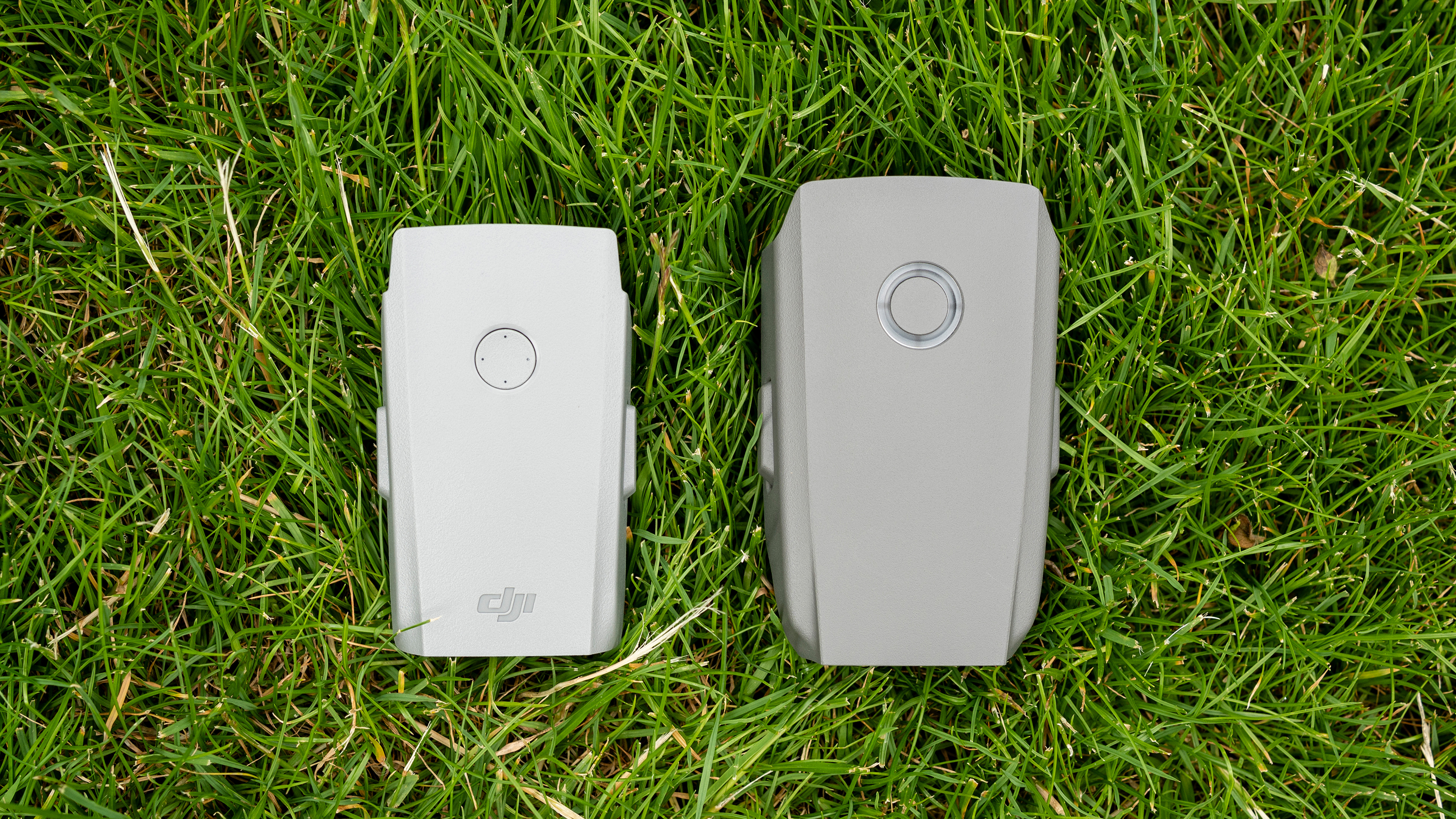
When it comes to battery life, the Mavic Air 2 is the stronger performer despite using smaller and lighter batteries, but that’s testament to the rapid development of battery technology. Maximum flight time is advertised as 34 minutes without wind, while the Mavic 2 Pro is rated at up to 31 minutes at 25kph with no wind.
In real life flying situations, the battery life provided by the Mavic Air 2 does indeed exceed that of the Mavic Pro 2, although wind conditions, temperature and a minimum battery limit (for example, 20%) mean that neither drone will often reach these maximum amounts.
Video and image quality
- Both drones offer flat video profiles for professional workflows
- The Mavic Air 2 is a significant upgrade over its Mavic Air predecessor
- But the Mavic 2 Pro produces better quality video and stills overall
Looking at the footage of the solar farm, the Mavic 2 Pro appears to be able to much more effectively resolve detail when moving quickly above the panels and looking down on them. Another difference that has become evident from this footage is that the Mavic 2 Pro camera has a much greater dynamic range than the Mavic Air 2.
In the section of footage where the drones fly above the panels and the camera lifts to reveal the sky, detail is visible in the Mavic 2 Pro footage but the Mavic Air 2 footage reveals an overexposed sky. The Mavic 2 Pro offers 10-bit HDR video, but when shooting in standard video modes rather than Dlog-M or HDR, the sensor appears to have a much greater dynamic range.
The same footage was captured with the Mavic Air 2 in HDR video mode to expand the dynamic range, and sky detail was revealed at the end although the ground section of the video was brighter than in standard video mode. HDR video is highly effective but can only be used in auto – there’s no manual video control. You can, of course, still use ND filters to try to keep shutter speed at the desired setting, but there will always be an element of guesswork here.
The Mavic 2 Pro can shoot in the Dlog-M color profile to capture a higher dynamic range, but the result is flatter colours and contrast so footage must be color graded during editing. The Mavic Air 2 uses the D-Cinelike flat profile that’s similar to Dlog-M in that it needs to be processed during editing, but this profile is generally easier to color grade than Dlog-M.
There’s a great deal of debate about which profile is best, but the fact that both drones offer a flat profile is extremely useful for producing aerial video to fit into a professional video workflow.
In terms of stills, the Mavic Air 2 has come a long way since its Mavic Air predecessor, with improved color rendition and enhanced noise response at higher ISO settings.
The Mavic 2 Pro, however, captures colors much more naturally and produces a greater amount of sharp detail across the frame.
This, of course, comes at the expense of the size and weight of the drone, with a larger camera and gimbal needed to house the larger imaging sensor.
Verdict
While these two drones look very similar in terms of their design and specs, there are crucial differences that mean they'll appeal to different photographers, videographers and drone pilots. It's not that one is objectively better than the other, they're just different.
When it comes to pure image and video quality, as well as versatility thanks to its adjustable aperture, the Mavic 2 Pro is the superior drone and is the best option for creatives working with drones in a professional capacity. Still images in Raw and JPEG are also larger thanks to the 1-inch 20MP sensor, compared to the 1/2-inch 12MP sensor of the Mavic Air 2.
The Mavic Air 2 does have the 48MP image mode for creating higher resolution JPEGs, which was a headline feature at launch. But this involves in-camera interpolation resulting in muddy colours and less sharp images than when shooting in Raw. You can use Photoshop to achieve better results by manually interpolating processed Raw files during post-processing.
This might sound like a negative view of the Mavic Air 2’s image quality, but the drone is capable of producing excellent stills and video. Especially when you consider how much smaller and lighter it is compared to the Mavic Pro 2. The Mavic Pro 2 remains highly portable, but the Mavic Air 2 certainly beats it in this area.
For this reason, the Mavic Air 2 is ideal for photographers and videographers who are carrying other equipment, but need to capture aerial stills and video alongside their standard ground-based work. It's also the better option for hobbyists who are looking for a lightweight option for days out.
Despite its name, the Mavic Air 2 can be used professionally and has a faster video bitrate of 120Mbps compared to 100Mbps, as well as greater frame rates in HD and UHD video.
As always, the final factor that sways your decision could be budget – and with the Mavic Air 2's basic kit costing $799 / £769 / AU$1,499 compared to $1,599 / £1,349 / $2,499 for the Mavic 2 Pro, the Mavic Air 2 is the more financially attractive option and perhaps offers the best value too.
- These are the best drones in the world right now
from TechRadar - All the latest technology news https://ift.tt/32QOqzm
Aucun commentaire: